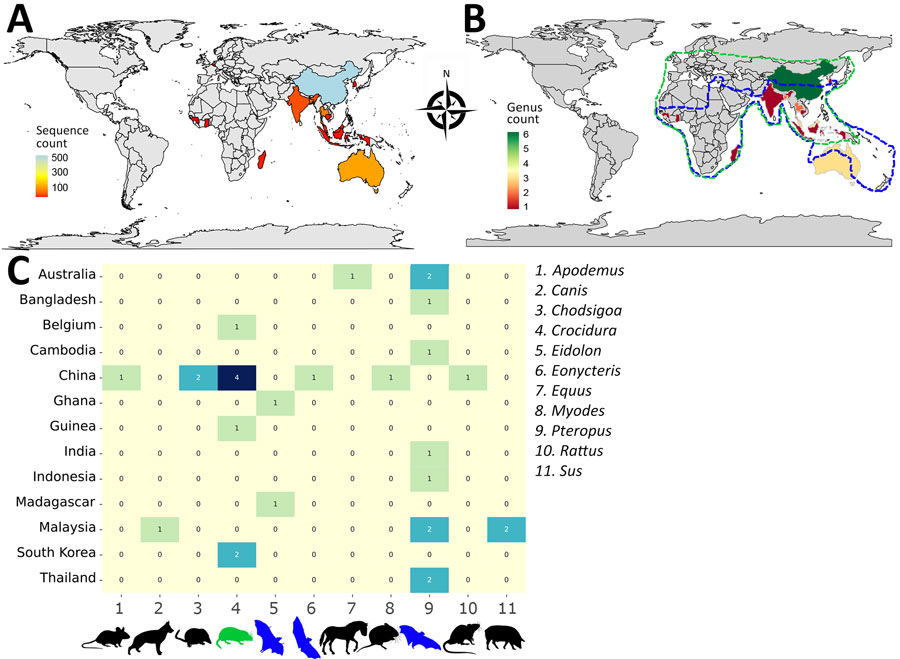Volume 31, Number 3—March 2025
Synopsis
Genetic Diversity and Geographic Spread of Henipaviruses
Figure 4

Figure 4. Geographic distribution of henipavirus hosts by country on the basis of henipavirus sequences in the National Center for Biotechnology Information Virus database (https://www.ncbi.nlm.nih.gov/labs/virus) as of December 11, 2023. A) Number of henipavirus sequences in each country. B) Henipavirus host diversity at country level, estimated by calculating the sum of animal genera per country. The habitat range of pteropodids is circled in blue and the shrew genus Crocidura in light green. C) Henipavirus host species for each animal genus across countries.
Page created: February 04, 2025
Page updated: February 28, 2025
Page reviewed: February 28, 2025
The conclusions, findings, and opinions expressed by authors contributing to this journal do not necessarily reflect the official position of the U.S. Department of Health and Human Services, the Public Health Service, the Centers for Disease Control and Prevention, or the authors' affiliated institutions. Use of trade names is for identification only and does not imply endorsement by any of the groups named above.